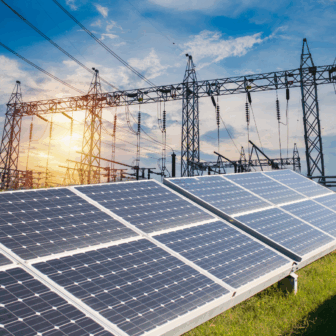Don’t get me wrong, “new” is not always better. For instance, I LOVE musical oldies but goodies. Ask around. Nothing gets me more jazzed than listening to a great Stevie Wonder hit or one of my old-school favorites from Marvin Gaye or the Temptations. Classical movies are some of the best that have ever been made. Chief on the list are “In the Heat of the Night” and “The Godfather Parts I & II” (see Part III for why “new” is not always better). In fashion, what once was popular two decades ago will most certainly become popular again in the decade to come.
The point that I’m trying to make is that there are times where I and many of you like to enjoy the greatness of years past and indulge on some of its fruits. In some areas like music, art, and culture, “old” may sometimes be “better”.
But when it comes to industrial, technological, or medical innovations, new is almost always better.
Yes, the caveat is intended. More times than not, when it comes to science or engineering innovations, indeed, new is better. The interstate highway system that was developed under President Eisenhower in the 1950’s and expanded upon thereafter remains the largest industrial project ever embarked upon by the United States of America. The project cost billions of dollars to develop and maintain. But that vision and leadership forever changed the way Americans traveled across the country, for the better.
What the interstate did for travel, the internet did for communications. Personal computing revolutionized the world. We now have access to a library’s worth of information at the tips of our fingers. We can send letters and notes to loved ones in seconds. All of this has helped change society, for the better.
The X-ray and subsequent variations thereof completely revolutionized the practice of medicine. The ability to see deep inside of the human body, without cuts, in order to diagnose and treat injuries and disease is quite remarkable. This improved our way of life, for the better.
Society has now largely accepted these incredible breakthroughs and investments. No one is clamoring for the days of carrier pigeons, witch doctors, and travel by horse and buggy. Modernization is the cause of these advancements. Yet, when it comes to our energy future – how we power America – we are trapped in the past and are resisting advancement.
The use of coal and oil to heat homes and power society was a major technological achievement in our past. The continual use of these technologies is not part of our future. We are at a watershed moment in the energy debate where bold ideas, strong leadership, and visionary purpose are needed. There are those who believe that fracking should be a part of that future. Enter the caveat. “New” is not “always” better. Our friends in Maryland are working hard to ensure that any company who wants to engage in this practice must first extensively study all of the effects of fracking, like its environmental effects.
This is responsible behavior. What isn’t responsible is insisting on an extraction method like fracking while willfully ignoring other technologies like solar and wind. It is incumbent on us to push our leaders to invest in technologies that push our society forward in a positive fashion, rather than simply swapping one pollutant for another.
This century’s new and improved energy breakthrough will occur when we begin to use new technologies to power America that not only gets the job done, but also leaves less of a footprint. Only in this way will new energy solutions be better than the ones they replaced.





